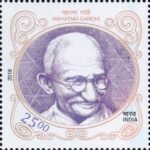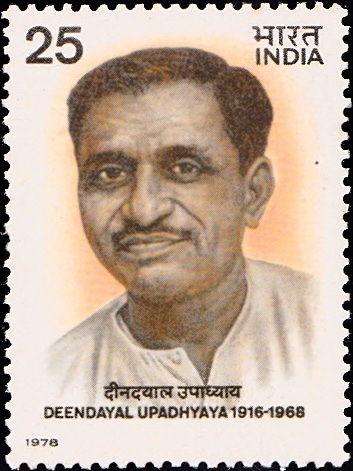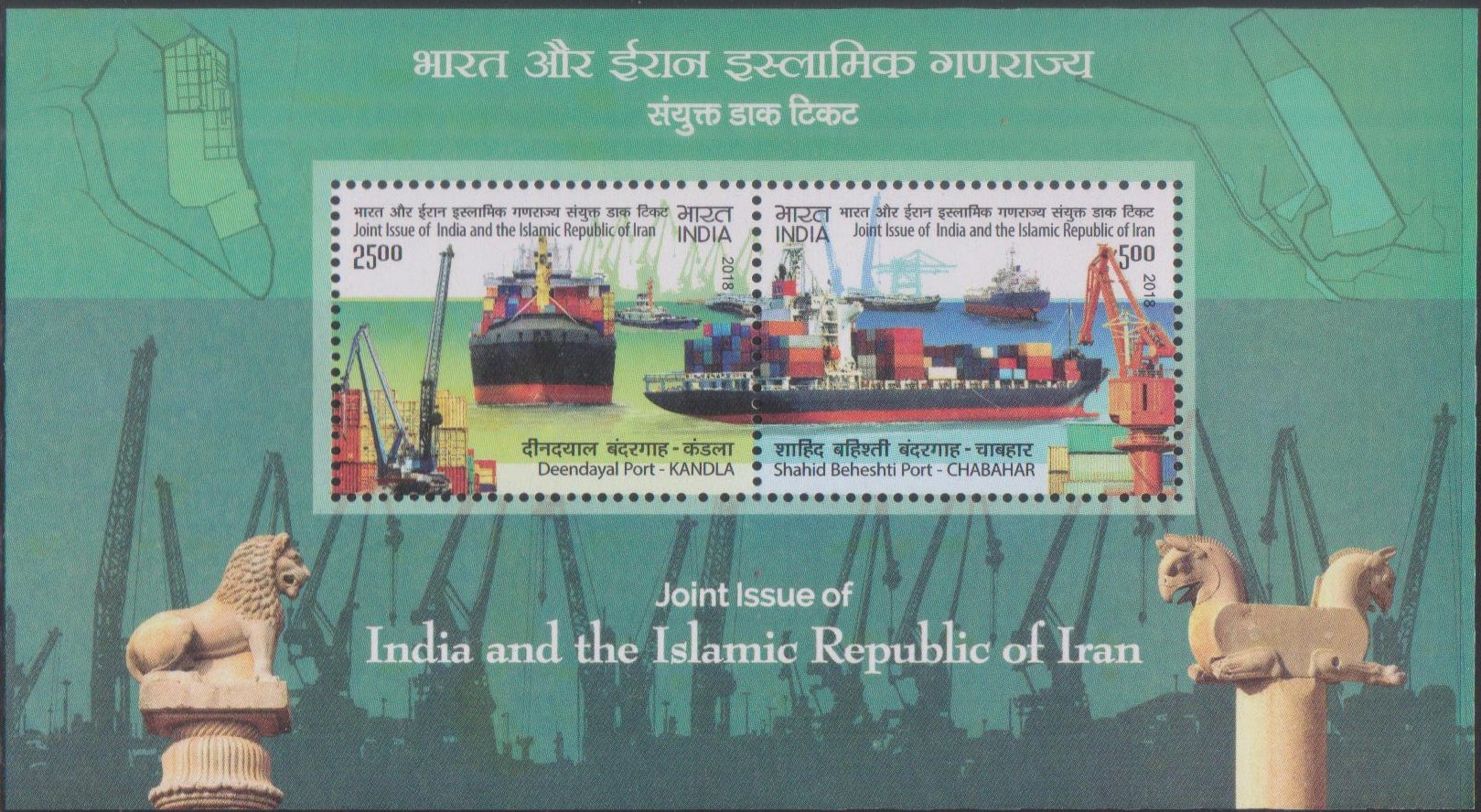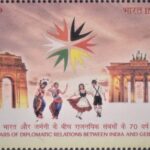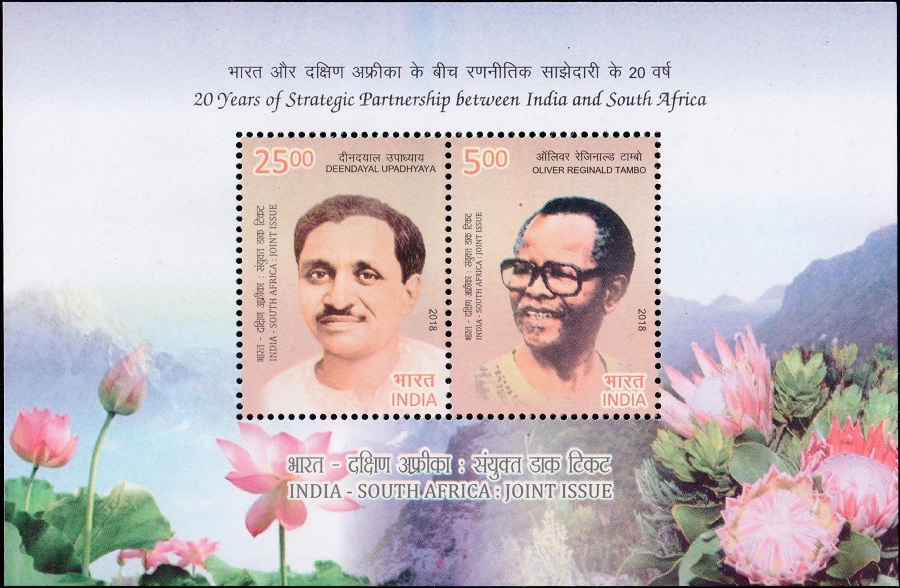
India & South Africa Joint Issue 2018 – 1
Complete set of 2 nos. of commemorative postage stamps on India–South Africa : Joint Issue : 20 years of Strategic Partnership between India and South Africa : Deendayal Upadhyay and Oliver Tambo :


 Issued by India
Issued by India
Issued on Jun 7, 2018
Issued for : Department of Posts is pleased to release a set of two Commemorative Postage Stamps between India and South Africa to mark “20 years of Strategic Partnership between India and South Africa” featuring images of ‘Deendayal Upadhyaya’ from India and ‘Oliver Reginald Tambo’ from South Africa.
Credits :
Stamps/Miniature Sheet/FDC/Brochure/Cancellation Cachet : Smt. Alka Sharma
Type : Miniature Sheet, Mint Condition
Colour : Multi Colour
Denomination : 2500, 500 Paise
Stamps Printed : 5.0 Lakh each
Miniature Sheet Printed : 1.1 Lakh
Printing Process : Wet Offset
Printer : Security Printing Press, Hyderabad
Name : Deendayal Upadhyay
Born on 25 Sep, 1916 at Chandrabhan, Mathura district, Uttar Pradesh, India
Died on 11 Feb, 1968 at Deen Dayal Upadhyaya Nagar, Uttar Pradesh, India
Name : Oliver Reginald Kaizana Tambo
Born on 27 Oct, 1917 at Nkantolo, Bizana, South Africa
Died on 24 Apr, 1993 at Johannesburg, South Africa
About :
- India’s relations with South Africa date back several centuries. India was the first country to sever trade relations with the apartheid Government in 1946. Diplomatic and consular relations with South Africa were restored in November 1993.
- India–South Africa relations have been growing from strength to strength. 2017 marked 20 years of Strategic Partnership between the two countries (the Red Fort Declaration for Strategic Partnership was signed by the Prime Minister of India Shri Deva Gowda and President of South Africa Nelson Mandela at New Delhi in March, 1997). 2018 marks 25 years of the establishment of relations between India and South Africa and also marks the 125th year of the Pietermaritzburg railway station ‘incident’ involving Mahatma Gandhi.
- Our bilateral relations have been strengthened and nourished by a regular exchange of visits at the Head of the Government, Head of the State, Ministerial, Parliamentary and official levels. A number of bilateral agreements have been concluded between the two countries since 1993 in areas ranging from economic and commercial cooperation, defence, culture, health, human settlements, public administration, science and technology to education.
- Under the IBSA & BRICS Initiatives, both countries interact regularly at all levels. On the Commercial & Economic front, our bilateral trade was US$ 9379.71 million in 2016-17 and from 01 April, 2017 to 31 January, 2018 it is US$ 8812.22 million. India is the fourth largest trade partner of South Africa. About 150 Indian companies have their presence in South Africa, with an estimated investment of about US$ 10 billion.
- Regular cooperation has been witnessed in the areas of sports. Approximately 1000 South African nationals have been trained under the Indian Technical and Economic Cooperation (ITEC) programme since 1993-94. The South African Indian origin community numbers around 1.5 million which constitutes about 3% of South Africa’s total population. South Africans of Indian origin are well-represented in government, business, media, legal and other professions. The year 2010 marked the 150th anniversary of the first arrival of Indians in South Africa. 2014 marked 100 years of Gandhiji’s final departure to India from South Africa which date is commemorated annually as Pravasi Bhartiya Divas.
- The theme for India–South Africa: Joint Issue is “20 years of Strategic Partnership between India and South Africa” depicting images of “Deendayal Upadhyaya” from India and “Oliver Reginald Tambo” from South Africa on stamps.
- Deendayal Upadhyaya:
- Deendayal Upadhyaya was born on 25 September, 1916, in the village of Dhankia in Rajasthan. He lost his parents at an early age and was brought up and educated at his maternal grandfather’s place under difficult conditions. Deendayal drew strength from the hardships and sufferings around him and rose above his circumstances through sheer grit and determination. He received primary education at Kota and Rajgarh. He matriculated from Sikar. Deendayal went to Pilani to study for his intermediate. He topped the board examination in 1937 with distinction in all subjects. He graduated with first division from Sanatan Dharma College, Kanpur in 1939 and joined St. John’s College, Agra for pursuing his Master’s Degree in English Literature. He passed the Provincial Services Exam but he did not join as he was not interested in administrative services. His special areas of interest were sociology and philosophy.
- Deendayal Upadhyaya was an extremely disciplined and devoted person. His devotion to service, humility and modesty earned respect of those around him. While studying for his graduation in Kanpur in 1937, Deendayal came into contact with Rashtriya Swayamsevak Sangh (RSS) and became a life-long pracharak of the Sangh. Subsequently, he became the General Secretary of the Bharatiya Jan Sangh and later its President.
- Deendayal was a deep and original thinker. In the field of politics and economics, he was pragmatic and down to earth. He visualized for India a decentralized polity and self-reliant economy with the village as its base. He was open to the use of modern technology but wanted it to be adapted to suit Indian requirements. He placed the nation’s interests above everything else. He died on 11 February, 1968.
- Oliver Reginald Tambo:
- Oliver Reginald Tambo was born on 27 October, 1917 and groomed in a village life with strong morals and values of hard work. An eloquent young man, he was initially a member of the debating society in a different school where love for discussion and debate was kindled. He later enrolled at Holy Cross Mission near Flagstaff where he became one of the star students. He matriculated from St. Peter’s in Johannesburg with top marks and graduated from Fort Hare University with B.Sc. degree in Maths and Science. It was during this time that his talent as a leader came to the fore when he was elected to the Student’s Representative Council of his residence, Beda Hall.
- He started his career as a teacher in his alma mater St. Peter’s college. While teaching, he became a very active member of the African National Congress (ANC), forming its Youth League (ANCYL) and became its first National Secretary in 1944. He was promoted as president of the Transvaal ANCYL in 1948 and national vice-president in 1949. In 1951, he formed the first black law partnership with Nelson Mandela. In 1953, he became Secretary General of the ANC and in 1958, its Deputy President. In 1960, after the Sharpeville Massacre, the ANC feared increased attacks on their members, Tambo was asked by the ANC to travel abroad and set up the ANC’s international mission. Thereafter, Tambo headed the ANC diplomatic mission to campaign globally and gain support for the anti-Apartheid cause. He also addressed the UN General Assembly of the Special Political Committee, appearing for the freedom of South Africa. In 1963, he gave a passionate plea to the UN for the release of political prisoners in South Africa prisons.
- In 1967, after the death of ANC President – General Chief Albert Luthuli, Tambo became Acting President until his appointment was approved at the Morogoro conference in 1969. He served as President of the ANC till 1990, when Nelson Mandela was elected President. In 1990, Oliver Tambo and his family returned home after 30 years in exile. He passed the leadership baton to Nelson Mandela. He was elected as a National Chairperson of the ANC. He died on 24 April, 1993 at the age of 75 years.
- Text : Based on the information received from Ministry of External Affairs, Government of India.



